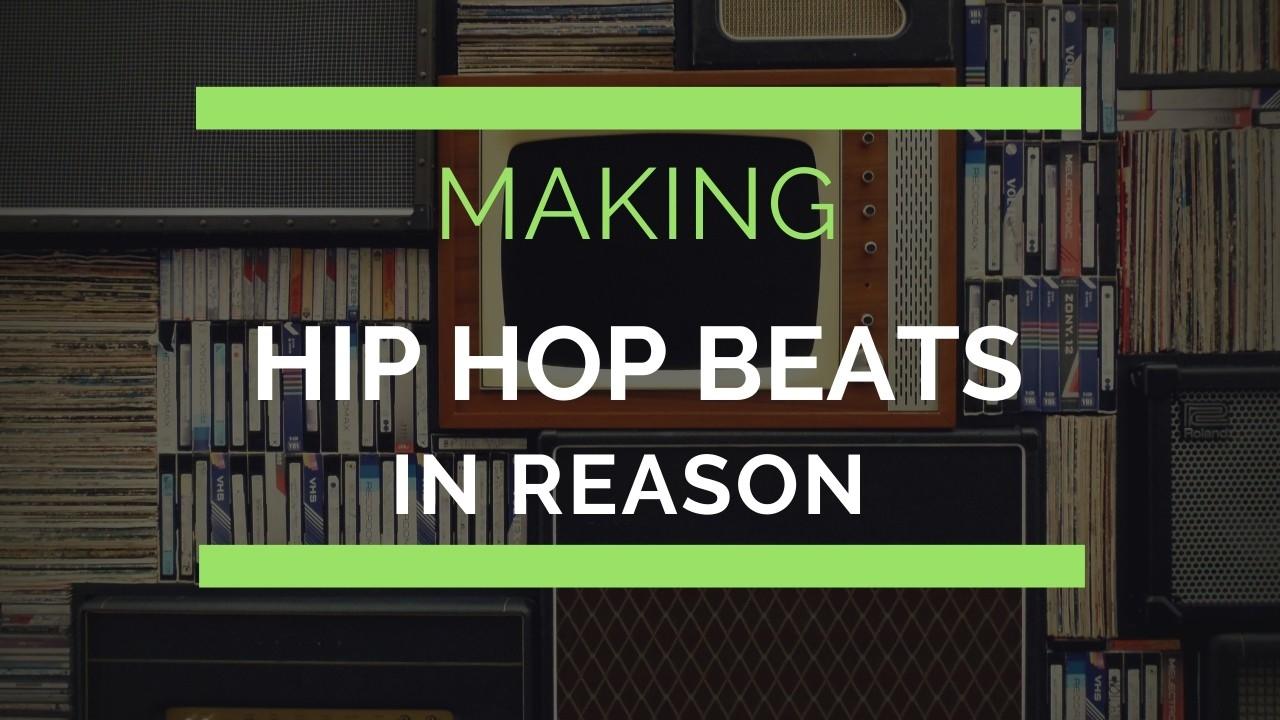How to Make a Hip Hop Beat in Reason

How to Make a Hip Hop Beat in Reason
This is a quick and dirty guide on how to make a hip hop beat in Reason (affiliate link). If you’ve never made a beat before, don’t worry, I’ll walk you through how to make a hip hop beat in Reason easily.
If you’ve made beats before, I think there’s some tips here that will help take your hip hop beats to the next level. I’m going to show you how to tighten up your beats, and how to mix them so they full of punch and bang.
Before you start recording and mixing, though, you’ll need to know what type of beat you want.
How to make a hip hop beat in Reason: Step 1 – Deconstruct Your Favorite Beat
One of my favorite techniques is to simply listen to loops or songs you like. Here’s a list of some of the best places for free loops and samples! Once you’ve found a beat you like, deconstruct it and add your own spin to!
After you have deconstructed enough beats, you’ll start to understand what goes into a beat, and it will become easier to build your own beats from scratch.
To do this easily, create a track in Reason and import the beat you want to imitate. Alternately, if it’s a Dr. OctoRex loop, you can load one of those up and compare to it.
First try to imitate the drum beat itself.
Open up Kong, Dr. OctoRex, an NN-XT or whatever other device you want to use to play the beat.
You want to build up your beat starting with getting the kick drum correct in its placement. Then add the snare. From there, you’ll work on the hi-hats, and any accent cymbals.
Be sure to include a few variations in the patterns. Maybe just a little difference in timing, or double up a kick or snare somewhere. You can also try adding fills at the end of every few measures.
Once the groove of the beat is pretty solid, you’ll want to compare the individual drum samples you’re using to those in your reference track. That is if you’re trying to imitate the sounds. But don’t be afraid to experiment.
How to make a hip hop beat in Reason: Step 2 – Tighten Up
From here, you’ll want to tighten up your beat. This is time consuming, but one of the most important parts of creating a dope hip hop beat in Reason.
To do this, you’ll need to go into the Reason sequencer and zoom in on the notes. You’ll want to make sure each one is in the right spot. Unless you’re going for a programmed boom-bap sound, you’ll want to avoid quantizing. Otherwise, things will sound stiff and inhuman.
You’ll have to do this the old fashioned way. Note by note. But it pays off.
The other important thing to do at this step is to vary the velocity (aka volume) of your hits, to make things sound less mechanical. You can select all the notes, hit F8, and bring up the tool menu. Got to the “note velocity” sub menu, and select “random.” Try a setting of about 20% and click apply. This will randomly make all the notes increase or decrease in volume by 20%, creating a more human feel.

Use the “random” tool to create more human grooves.
Then, if you feel like there’s certain parts that need more emphasis, you can manually edit the velocity to bring those parts out, like drum fills, for example.
How to make a hip hop beat in Reason: Step 3 – Mixing Punch Hip Hop Drums
This step is perhaps the least understood. I’d really recommend watching this video first. It covers how to use parallel compression, reverb, eq, and saturation to create loud punchy drums.
I think hearing the examples is the best way to demonstrate this.
From a Frustrated Producer in a Ragtag Bedroom Studio to Major Placements on TV Earning $1,000s!
My name is Evan, and I've been making music since around 3rd grade. I'm from San Diego, California, but I've lived in Washington, DC for the last 20 years.
While I still have a full-time day job, I have created systems that have allowed me to produce dozens of songs a year in my spare time.
My songs have been on Netflix, TV shows like the 90 Day Fiance, an award-winning indie film, and NPR’s “All Thing Considered.” They've also been streamed millions of times.
In addition to being a music producer, I am passionate about teaching people how they can make professional-sounding music and earn money licensing it, all in their spare time.
Thousands of musicians, like yourself, have trusted me to guide their musical journey. My YouTube videos have been watched nearly a million times. And my story has been in Forbes, Side Hustle Nation, and the Side Hustle School.





